
Polymer Crystallization
Scope & Guideline
Connecting Researchers in the Polymer Community
Introduction
Aims and Scopes
- Polymer Crystallization Mechanisms:
Research on the fundamental mechanisms of crystallization in polymers, including nucleation, growth, and phase transitions. - Structure-Property Relationships:
Investigating how the crystalline structure of polymers affects their mechanical, thermal, and electrical properties. - Innovative Crystallization Techniques:
Development and application of novel techniques for controlling crystallization processes in various polymer systems. - Nucleation and Morphology Studies:
Exploration of the effects of nucleating agents and morphological changes on the crystallization behavior of polymers. - Polymer Blends and Composites:
Studies on the crystallization behavior of polymer blends and composites, focusing on interactions between different polymer phases.
Trending and Emerging
- Nanocomposite Crystallization:
An increasing number of studies are focusing on the crystallization behavior of polymer nanocomposites, emphasizing the role of nanoparticles in enhancing material properties. - In-situ and Real-time Crystallization Analysis:
There is a growing trend towards using in-situ techniques, such as light scattering and X-ray scattering, to study crystallization processes in real-time, allowing for a better understanding of dynamics. - 3D Printing and Crystallization:
Research exploring the crystallization behavior of polymers during and after 3D printing is on the rise, indicating the relevance of additive manufacturing in polymer science. - Biodegradable and Sustainable Polymers:
Emerging studies are increasingly addressing the crystallization of biodegradable polymers, reflecting a growing interest in sustainable materials and their applications. - Advanced Simulation Techniques:
The use of molecular dynamics and Monte Carlo simulations to predict and analyze crystallization phenomena has gained traction, showcasing the integration of computational methods in polymer research.
Declining or Waning
- Traditional Crystallization Techniques:
There is a noticeable decrease in papers focusing solely on traditional crystallization techniques, possibly due to a shift towards more advanced methods such as simulations and in-situ measurements. - Static Crystallization Studies:
Research centered on static crystallization studies, which do not incorporate dynamic or real-time analysis, has become less common, reflecting a trend towards more dynamic and application-oriented research. - Conventional Polymer Materials:
The focus on conventional polymer materials without innovative modifications or applications appears to be declining as research increasingly explores advanced materials and nanocomposites.
Similar Journals
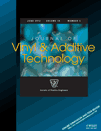
JOURNAL OF VINYL & ADDITIVE TECHNOLOGY
Exploring Innovations in Vinyl and Additive ScienceJOURNAL OF VINYL & ADDITIVE TECHNOLOGY, published by Wiley, is a pivotal resource in the fields of Chemical Engineering, Chemistry, and Materials Science, offering a platform for the dissemination of cutting-edge research from 1989 to the present. With its ISSN 1083-5601 and E-ISSN 1548-0585, the journal operates from the UK and is notable for its diverse coverage, including insights into polymers, plastics, and innovative marketing strategies specific to this niche. Holding a commendable positioning within the Q2 category in Chemical Engineering and Chemistry, alongside notable ranks in Materials Chemistry and Marketing, this journal delivers impactful research essential for professionals, academics, and students alike. Though not an Open Access journal, it is indexed in prestigious databases, ensuring accessibility to vital findings in vinyl and additive technology. Researchers looking to stay at the forefront of material innovations will find this journal an invaluable asset.
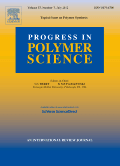
PROGRESS IN POLYMER SCIENCE
Advancing the Frontiers of Polymer ResearchPROGRESS IN POLYMER SCIENCE is a prestigious academic journal published by PERGAMON-ELSEVIER SCIENCE LTD, dedicated to advancing the field of polymer science. With an ISSN of 0079-6700 and an E-ISSN of 1873-1619, this journal has established itself as a leading source of high-quality research since its inception in 1967. It ranks in the top quartile (Q1) across multiple categories including Ceramics and Composites, Materials Chemistry, Organic Chemistry, Polymers and Plastics, and Surfaces and Interfaces, reflecting its strong reputation and impact within the scientific community. The journal features rigorous peer-reviewed articles that not only contribute to theoretical advancements but also emphasize practical applications of polymer science in various industries. Although it is not an open-access journal, it remains accessible through institutional subscriptions and provides invaluable insights and data for researchers, professionals, and students alike. PROGRESS IN POLYMER SCIENCE is essential reading for anyone looking to stay abreast of the latest developments and innovations in this dynamic field.

Journal of Polymer & Composites
Advancing Innovations in Polymer Science and Composite Materials.Journal of Polymer & Composites, with ISSN 2321-8525 and E-ISSN 2321-2810, is an esteemed academic journal published by STM JOURNALS, dedicated to the advancement of knowledge in the rapidly evolving fields of polymer science and composite materials. The journal serves as a pivotal platform for researchers and professionals, offering cutting-edge research articles, reviews, and case studies that explore innovative developments and applications in polymer chemistry, material science, and engineering. Although currently lacking an impact factor citation, the journal aims to foster dialogue among academia and industry partners, addressing the latest trends and breakthroughs that drive the field forward. With a commitment to scholarly excellence, the Journal of Polymer & Composites is positioned as an essential resource for enhancing the understanding of polymer composites and their multifaceted applications. Notably, STM JOURNALS' reputation for quality publications underscores the journal’s importance in facilitating impactful research and educational initiatives worldwide.

POLYMERS & POLYMER COMPOSITES
Connecting Researchers in Polymer ExcellencePOLYMERS & POLYMER COMPOSITES, published by SAGE Publications Ltd, is a prestigious journal dedicated to the exploration of significant advancements in the diverse fields of polymers, composite materials, and their innovative applications. With an ISSN of 0967-3911 and E-ISSN of 1478-2391, this journal plays a crucial role in the academic community, boasting an impressive ranking in the Q2 quartile across pivotal categories such as Ceramics and Composites, Materials Chemistry, and Polymers and Plastics in 2023. Positioned in the United Kingdom, it serves as a vital resource for researchers and professionals, providing insights into current trends and future directions in material science. Despite its availability not extending to Open Access, the journal aims to promote rigorous peer-reviewed research, thus fostering knowledge and collaboration among scholars. With publication convergence from 1993 to 2024, POLYMERS & POLYMER COMPOSITES stands as a cornerstone for those pursuing advanced understanding and excellence in material innovation.
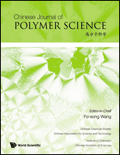
CHINESE JOURNAL OF POLYMER SCIENCE
Exploring the Boundaries of Polymer TechnologiesThe CHINESE JOURNAL OF POLYMER SCIENCE, published by SPRINGER, stands as a premier periodical in the realm of polymer science, showcasing cutting-edge research and technological advancements since its inception in 1985. With an impressive impact factor reflecting its significance in the field, this journal is categorized in the top quartiles (Q1) of Chemical Engineering, Organic Chemistry, and Polymers and Plastics. It features a wide spectrum of innovative studies, thus serving as an essential resource for researchers, professionals, and students dedicated to understanding and advancing polymer-related technologies. The journal is indexed in Scopus, with notable rankings that highlight its influence in the disciplines of organic chemistry and materials science, making it a vital communication platform for authors around the globe aiming to disseminate impactful findings. Although not an open-access publication, the journal ensures robust accessibility through institutional subscriptions and partnerships, further emphasizing its commitment to the advancement of polymer science.
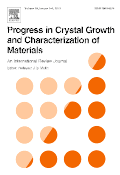
PROGRESS IN CRYSTAL GROWTH AND CHARACTERIZATION OF MATERIALS
Advancing the Frontiers of Crystal SciencePROGRESS IN CRYSTAL GROWTH AND CHARACTERIZATION OF MATERIALS, published by Pergamon-Elsevier Science Ltd, is a premier journal dedicated to the advancement of knowledge in the fields of condensed matter physics and materials science. With an ISSN of 0960-8974 and an E-ISSN of 1878-4208, this esteemed journal has been at the forefront of research since its inception in 1990 and continues to publish cutting-edge findings until 2024. Recognized as Q1 in Condensed Matter Physics and Q2 in Materials Science (miscellaneous) as of 2023, it holds impressive Scopus rankings, placing it in the 89th and 81st percentiles of its respective categories. The journal aims to foster innovation and facilitate the exchange of ideas among researchers and professionals by showcasing significant developments in crystal growth and material characterization methodologies. Although it currently does not offer open access, the journal remains a vital resource for academia, providing comprehensive insights that drive forward the fields of physics and materials science, thereby benefiting both seasoned researchers and students alike.

CELLULAR POLYMERS
Transforming Ideas into Polymer InnovationsCELLULAR POLYMERS, published by SAGE Publications Ltd, is a leading journal dedicated to the exploration and advancement of polymer science, particularly within the realms of organic chemistry and materials science. With an ISSN of 0262-4893 and E-ISSN of 1478-2421, this journal has been a critical resource for researchers and professionals since its inception in 1982, continuously evolving to retain its relevance in an ever-advancing field. Currently, it ranks in the Q3 quartile for both Organic Chemistry and Polymers and Plastics, reflecting its focused contributions to these disciplines. Despite accessing content through subscription, the journal’s indexed visibility in databases such as Scopus, with a percentile ranking of 41st in its category, highlights its significance in the academic community. CELLULAR POLYMERS serves as a platform for innovative research and developments in polymer processing, characterization, and applications, aiming to foster interdisciplinary collaborations and knowledge dissemination among scholars, practitioners, and students alike.
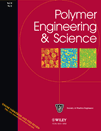
POLYMER ENGINEERING AND SCIENCE
Advancing the Frontiers of Polymer KnowledgePOLYMER ENGINEERING AND SCIENCE, published by WILEY, is a premier journal specializing in the field of polymer science and engineering. Since its inception in 1961, this journal has been at the forefront of disseminating high-quality research, focusing on various aspects of polymers and plastics, including their chemistry, properties, and applications. With an impressive impact factor, it ranks in the second quartile (Q2) across multiple categories, including Chemistry (Miscellaneous), Materials Chemistry, and Polymers and Plastics, showcasing the journal's significance and influence in these vital areas of research. Researchers and professionals in academia and industry will find the latest advancements and innovative methodologies in polymer science, making this journal an essential resource for those looking to stay updated on cutting-edge developments. While it does not currently support Open Access, its comprehensive scope and critical insights positioned it as a valuable platform for advancing knowledge and fostering collaboration within the polymer community. The journal’s office is located at 111 River St, Hoboken 07030-5774, NJ, United States, emphasizing its strong presence in the academic landscape.

IRANIAN POLYMER JOURNAL
Bridging Theory and Application in Polymer ResearchWelcome to the Iranian Polymer Journal, an esteemed publication encompassing a rich history since its inception in 1996 and extending its scholarly reach up to 2024. Published by Springer from Switzerland, this journal stands out in the fields of Chemical Engineering, Materials Chemistry, and Polymers and Plastics, proudly holding a Q2 category ranking in each of these disciplines for 2023. With an ISSN of 1026-1265 and an E-ISSN of 1735-5265, the journal serves as a vital resource for researchers, professionals, and students, offering insights into polymer science and interdisciplinary applications. Although not an open-access journal, it presents an invaluable platform for high-quality research dissemination and robust peer-reviewed articles. With Scopus rankings indicating its respected position within the academic community, the Iranian Polymer Journal is committed to advancing knowledge and fostering innovation in polymer-related studies, making it an essential addition to your research library.

Polymers
Fostering collaboration in the world of polymers.Polymers is a premier journal published by MDPI, dedicated to advancing the field of polymer science and technology. This open-access journal, established in 2009, has quickly gained prominence in the academic community, serving as a vital platform for disseminating high-quality research articles, reviews, and communications in the realms of chemistry, polymers, and plastics. Based in Switzerland, with an impressive ranking in the Q1 quartile for both Chemistry and Polymer studies, Polymers boasts a significant impact factor, reflecting its rigorous peer-review process and esteemed editorial board. Researchers, professionals, and students alike benefit from the broad accessibility of content, allowing for a more extensive reach and engagement within the scientific community. As a key resource for the latest advancements and innovations in polymer research, Polymers continues to lead discussions, inspire collaborations, and foster the development of novel materials that shape various industrial applications.